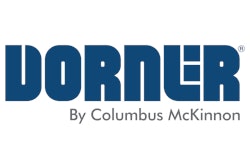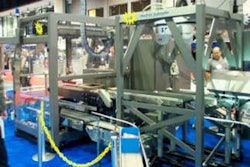"Training should be spelled out and included in the selling price [of equipment]” is a change stressed by a Western-based systems integrator. This point was made repeatedly by supplier company respondents who participated in Packaging World’s training survey, conducted this summer at its Web site www.packworld.com.
Although the survey was structured to elicit the comments of end users of equipment and packaging systems, it’s obvious that representatives of packaging products manufacturers are equally concerned with field training. And their comments so closely mirror those of their customers that either they understand their own company’s failures, or they’re listening well to the complaints of their customers.
Most of the comments reported here were typed in on the survey questionnaire in answer to two open-ended questions: What’s the most important change in training needed to be made by OEMs and component suppliers? If you could fix one shortcoming in your company’s approach to training, which would it be?
Much like their customers, these representatives also see time as the most important barrier to good training. “On-site time constraints” is the major shortcoming seen by a representative of a Midwest conveyor systems manufacturer. “Longer training [programs] and a greater frequency of them,” was sought by a Canadian packaging systems consultant.
“Allocate more time and resources to training in concert with the manufacturer of the equipment, and an ongoing follow-up of both the manufacturer and our product managers,” is the suggestion made by a representative of a distributor of sealing products. The representative of a major Eastern contract packager not only mentions the need for more time for training, but adds that “employees need to better prepare for it” as well. This is echoed by the representative of an Eastern container manufacturer. “More preparation for future training and improved methods of communications” are the major shortcomings he’d like to fix.
In the end, then, the suppliers seem to agree that packagers are responsible for not allocating sufficient time for their employees to be properly trained, while the suppliers are to blame for not providing effective training programs. No participants, however, tackled the question of “which came first, poor training or the lack of time for it?”
“Add more time allocated to training employees. There is never enough time to complete this side of the equation and [packagers] end up paying for it in lost production and scrapped material,” stressed a respondent from a major national maker of case sealing equipment.
Manufacturers should “rate its importance higher and actually implement changes that have been discussed,” says a systems integrator’s representative. “Too often, things go right back to ‘the way they were’ before training [was conducted],” he points out. The same issue was brought up by a respondent from a systems integrator in Canada. “Inbreeding of ideas and approaches like always using in-house trainers and capabilities,” is what he’d like to change. “This leads to poor results and no growth of ideas and improvements.”
Individualized training
A representative from a packaging distributor in the West apparently has been listening to some of his customers. He sought “more time dedicated to one-on-one training. Individuals learn at different rates, so to achieve the required results usually requires more one-on-one training for certain employees.”
However, the respondent for a Canadian supplier of packaging materials saw it differently. “Train all employees in the same manner. This way, all employees are trained equally and know the same procedures,” she said. A representative for a maker of packaging equipment amplified on that: “Make sure that everyone is trained on a machine, not just the operators. Include the managers too,” she added.
The representative of a components manufacturer said he wanted to see “more integrated training among packager departments.” A respondent from a major national packaging products distributor said he wanted to see “more discipline in fulfilling training needs on a planned basis.” Another distributor representative said he felt employees “need more hands-on training, not just classroom training.” Another packaging equipment distributor decried the training opportunities for his company’s people. “Following training seminars, our people often don’t have the opportunity to work on equipment so that we can present it effectively to prospective buyers.”
Finally, a respondent from a small parcel handling company said he “would require more short, in-depth topics for training rather than a few broad-based training programs.”
Improve trainers, documentation
Suppliers had nearly as many suggestions for changes in training as their counterparts at the end-user companies discussed last month (see PW, Oct.‘00, p. 00).
Two of the most frequently mentioned changes were expanded use of CD-ROM training and online training. Like PW noted last month, this isn’t surprising because the survey itself was conducted online. Suppliers should “offer training and equipment maintenance answers, drawings and service manuals on the Internet, especially in a form that can be downloaded by buyers for company files,” according to a respondent with a maker of returnable containers.
The representative of a major container supplier suggested that “training should be done for an entire week so that all shifts can be trained well. Suppliers need to make the handbooks as easy as possible to understand.” A respondent from a maker of components says she wanted “more simple instructions that are accessible when trainers aren’t.”
A participant from a supplier of capping equipment believed that most supplier training needs to be totally revamped. Training needs to include “less technical material and more user-friendly information. The material needs to be understood by both the skilled and the unskilled workers,” he said.
Others suggest that training cover replacement parts, computer-based learning and more work on human/machine interfaces. The representative of a Canadian systems integrator said, “OEMs should use outside qualified trainers to augment their service and training personnel. Service people too often are poor trainers.”
Along with interactive training, a respondent with a maker of food packaging equipment suggested a “completion exam for operators.”
Focus on new hires?
Along with other suggestions, several supplier particpants elected to focus on both training and testing of new employees. One participant from a major national maker of capping machines saw “better training of new hires” as a major shortcoming. The representative for a machinery distributor in the West wanted companies to “screen new employees for their ability to absorb and retain training material.”
The representative of a major plastics resin supplier put it this way: “We need very good on-site training in actual situations. And we need equivalent training for newly hired personnel.” A participant from a leading maker of plastic containers said that sophisticated training devices can help with new employees. “I’d like to have CD-ROM versions of the training manuals available to aid in the ongoing training of new employees. Our goal is to develop a standardized training program for new hires, as well as developing a new plant start-up procedure.”
The participant from a major beverage equipment manufacturer said he seeks a “mechanism for training new operators on existing machinery.” A representative from a maker of low-end box sealers said she wanted “hands-on training that can be done at a variety of distribution centers in the field. Can the OEMs ‘take their show on the road?’” she asked.
Trainers need upgrading
Even packaging suppliers recognize that the quality of the instructors isn’t always conducive to good training. The respondent from a West Coast maker of beverage equipment said the most important change would be “increased knowledge about machines from the trainers.” The participant from a Midwest component supplier also understands that trainers may be spread too thin to do effective work. He said that “many suppliers have one person doing the training, and it isn’t quite enough.” Another sought “better understanding of the machinery itself by the trainer.”
Some respondents indicated that trainers should devote more time to trouble-shooting the equipment, once the basic operation is understood.
But perhaps the most important word written by these supplier participants in the survey was “support.” The representative of a large protective packaging supplier asked for “continued support via phone and the Web.” Another equipment systems consultant said he wants OEMs to use the Internet “to supply materials and troubleshooting support.”
Another packaging equipment maker’s participant said that trouble-shooting information “should be available via phone or the Web if workers come to a roadblock.” Another supplier representative called simply for “hotlines” becoming available for support.
And, in a cynical view of trainers, the representative of a bottling systems supplier noted that trainers “should stick to the equipment and lay off the selling techniques.”
See sidebar to this article: PMMI’s ‘train the trainer’ program nearly ready






























